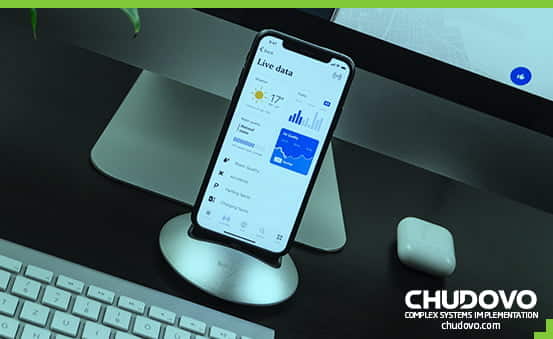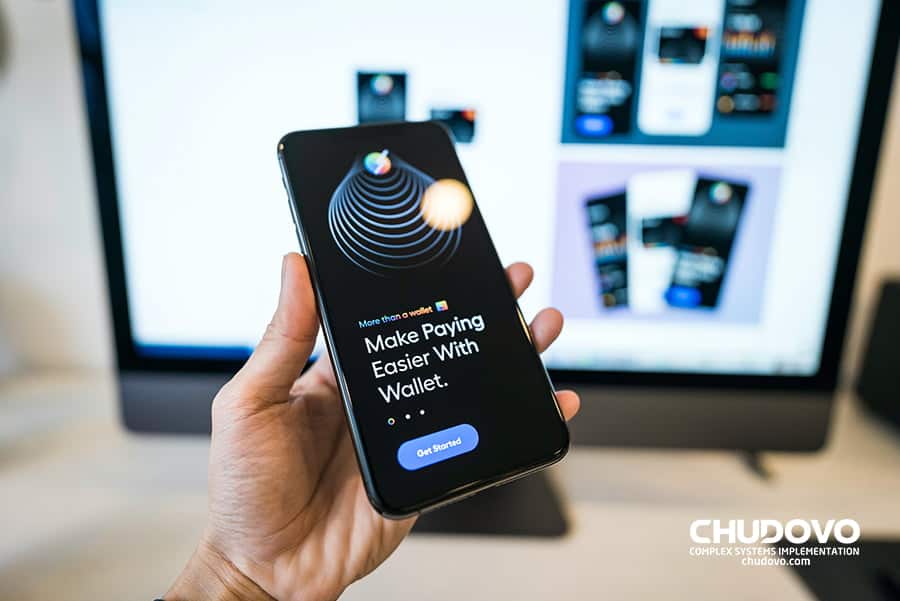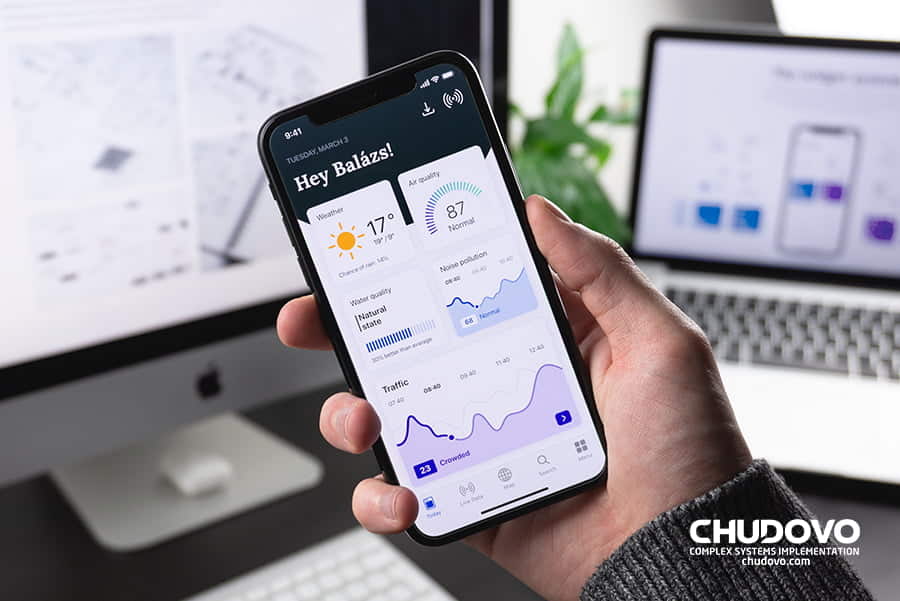
Mobile App Startup: Everything You Need to Know to Get Started
According to Statista, over 218 billion mobile apps were downloaded worldwide in 2020. This number is expected to reach 258 billion by 2023. That is why many people start to be interested in how to start an app startup. This text will give you a step-by-step guide with which you can learn all the nuances of how to develop your own application.
Table of contents
- Come Up With an Idea
- Conduct Detail-Oriented Market Research
- Choose an Ideal Platform
- Focus On Designing an Impeccable UI/UX
- Develop Your Product
- Look for Investment Opportunities
- Create a Strategic Marketing Plan
- Have a Monetization Plan in Place
- Continuously Update and Improve Your Application
- Develop an App Retention Strategy
- Conclusion
- FAQ

Come Up With an Idea
Coming up with an idea for your mobile app is the first step towards building a successful startup. You need to identify a problem that your app can solve or a need that it can fulfill. Here are some tips to help you come up with a great idea for your mobile app startup:
- Define the problem
Find a problem that you can solve with your application. Think about the difficulties people face in their daily lives and how your app can solve them. For example, you can create an app that helps people find parking spaces in a busy city.
- Find a niche
Identify a market niche that has not been fully exploited. Think of a specific group of people who might benefit from your app. For example, you can create an app that helps allergy sufferers find restaurants that suit their needs.
- Improve an existing application
Look at existing applications and identify areas for improvement. Think about how you can make the app better and more useful.
- Brainstorming ideas
Get together with friends or colleagues and discuss ideas for your application. Record all ideas that come up and evaluate them based on their feasibility and potential. Pick the best idea and start working on it.
Conduct Detail-Oriented Market Research
Launching a mobile startup is an exciting venture, but it can also be intimidating, especially in a highly competitive market. Conducting detailed market research is critical to understanding your target audience, competitors, and market trends. This knowledge will help you make informed decisions and increase your chances of success.
Below are some steps you can take to conduct effective market research and learn how to start a app business from the research side:
- Determine who your application is for and what problems it solves. This will help you define your target audience and create a user image. A user character is a fictional character that represents your ideal customer. This will help you understand the needs, interests, and behaviors of your customers.
- Study your direct and indirect competitors and analyze their strengths, weaknesses, and market share. This will help you identify gaps in the market and differentiate your application from the competition.
- Analyze market trends including new technologies, consumer behavior, and industry news. This will help you identify opportunities and potential challenges in the market.
- Conduct surveys, focus groups, and user testing to gather feedback from potential users. This will help you improve your application and improve the user experience. By listening to user feedback, you can identify areas for improvement and make changes that improve the user experience.

Choose an Ideal Platform
In startup app development, one of the most significant decisions you make is choosing the perfect platform. The platform you choose will determine the type of audience you can reach, the features you can implement, and the overall user experience of your app. Here are a few factors to consider when selecting a platform to run your mobile app on.
The target audience
The first factor to consider when picking a platform is your target audience. Who are you developing the application for? Is your app intended for iOS users, Android users, or both? If your audience is mostly iOS users, then developing an app for the App Store would be the right choice. On the other hand, if your target audience is mostly Android users, then you should develop an app for Google Play. You can also create an application that can be sold on both Google Play and the App Store.
Application Features
Another important factor to consider is the features you want to implement in your application. Different platforms offer different features and functions. For example, iOS is known for its excellent user experience and design, while Android offers more flexibility for customization and integration with other apps. If your application requires advanced features such as augmented reality or machine learning, you need to choose a platform that offers these capabilities.
Development costs
Development cost is another factor to consider when selecting a platform. Mobile app development for iOS tends to be more expensive than Android development due to the higher cost of Apple’s hardware and product development kits. If you’re on a budget, Android development might be a more cost-effective option.
App monetization
Finally, you should consider your app’s monetization strategy. Different platforms offer different options for earning money from your app. iOS users tend to be more likely to pay for apps or in-app purchases, while Android users are more likely to interact with ads. If you’re planning to monetize your app with ads, you might want to consider Android development.
Focus On Designing an Impeccable UI/UX
If you are planning to launch a mobile app, then designing an impeccable user interface (UI) and user experience (UX) should be your top priority. In today’s digital world, users have become more demanding and selective when it comes to the look and feel of the apps they use. Therefore, it is essential to create a unique and user-friendly design that will make your app stand out in the crowded market. That is why it is worth paying attention when you are wondering how to start an app. Here are some tips that you can follow to design an impeccable UI/UX for your mobile app:
- Keep it Simple: The simpler your design, the easier it will be for users to navigate your app. Avoid clutter and focus on providing a clean layout that is easy on the eye. A simple design will not only make it easier for users to find what they’re looking for but also improve their overall experience.
- Consistency is Key: Ensure that your design is consistent throughout the app. Use the same color schemes, fonts, and buttons to create a uniform experience for your users. A consistent design will help your users navigate your app with ease and feel in control of their experience.
- Use Intuitive Navigation: The navigation of your app should be intuitive and easy to use. Users should be able to find what they are looking for quickly and easily. Make sure that your navigation is straightforward and clearly labeled. You can use icons or symbols to make it more intuitive.
- Focus on Functionality: While a great design is important, functionality should be your top priority. Your app should work smoothly and efficiently, without any glitches or bugs. Focus on developing a functional and practical app that meets the needs of your target audience.
- Test, Test, Test: Before launching your app, be sure to test it thoroughly. This will help you identify any design flaws or functionality issues that need to be addressed. You can use user testing to get feedback on your UI/UX design and improve it before launching.
Develop Your Product
In full cycle product development, it is important to have a clear idea of the product you want to build. It is extremely significant to define the problem you want to solve and the target audience you want to serve. Do market research and gather feedback from potential users to identify the features and functionality that will make your app stand out.
Once you have a clear idea of your product, create a Minimum Viable Product (MVP) that includes the core features. An MVP is a prototype that allows you to test the feasibility of your product and collect user feedback. Based on user feedback, you can refine and improve your product.
Consider user experience (UX) and user interface (UI) when designing a product. Make sure your app is easy to use, visually appealing, and has a clear user interface. Make sure the features of the app are easily accessible and the design of the app is the same everywhere.
Look for Investment Opportunities
When you create a successful mobile app, one of the most important steps is to look for investment opportunities. Securing funding from investors can help you cover app development, marketing, and other business expenses. Here are some tips to help you find investment opportunities to launch your mobile app:
1. Determine your funding needs
Before you start looking for investors, you need to determine how much funding you need to launch your mobile app. Create a detailed budget plan that lists your expenses such as app development, server costs, marketing, and other business expenses. This will help you determine how much capital you need to raise. Also, find out information about pre-seed funding for startups, this will help you understand what budget you can count on.
2. Research potential investors
Once you have identified your funding needs, you can start looking for potential investors. Look for investors who have experience in the technology industry and have previously invested in mobile app startups. You can also use online platforms like AngelList and Gust to find investors interested in mobile app startups.
3. Prepare your presentation
To attract potential investors, you need to prepare a presentation outlining the mission, vision, and goals of your mobile app startup. Your presentation should also include information about your target market, competitors, and revenue model. Make sure your presentation is clear, concise, and visually appealing.
4. Attend networking events
Networking events are a great way to meet potential investors and raise awareness for your mobile app startup. Attend tech conferences, startup events, and other networking events to connect with investors and other entrepreneurs. Make sure you have your presentation ready and be prepared to answer questions about the development process of your mobile app.
5. Use social media
Social media is a great tool for communicating with potential investors and getting attention for your mobile app startup. Use platforms like LinkedIn and Twitter to connect with investors and share updates about your startup. You can also use social media to build a community around your mobile app and gain popularity.
Create a Strategic Marketing Plan
Mobile app development can be a lot of fun, but it’s important to remember that building a great app is only half the battle. When your app is ready to launch, you need to make sure it reaches your target audience and gains momentum in the market. The key to achieving this is to create a strategic marketing plan that will help you promote your app and build buzz around your launch. Here are a few steps to help you develop a marketing plan for your mobile app launch:
Define your target audience
The first step in creating a marketing plan for your mobile app is to determine your target audience. This will help you tailor your marketing efforts to the people most likely to use your app. Start by researching your target market and identifying their needs and pain points. This will help you understand what features and benefits your application should offer and how you can effectively position it and improve your application if necessary.
Set your marketing goals
Once you have a clear idea of your target audience, you need to set your marketing goals. What do you want to achieve with your marketing efforts? Do you want to increase downloads, increase user engagement, or increase revenue? Whatever your goals are, make sure they are specific, measurable, and achievable.
Create a marketing strategy
With your target audience and marketing goals in mind, it’s time to create a marketing strategy. This should outline the tactics you will use to reach your target audience and achieve your marketing goals. Some key components of a marketing strategy for launching a mobile app to market include:
- App Store Optimization (ASO): Optimize your app’s name, description, and keywords to improve its visibility in app store search results.
- Social Media Marketing: Using social media platforms like Facebook, Twitter, and Instagram to promote your app and engage with your target audience.
- Influencer Marketing: Partnering with influencers in your niche to promote your app to their subscribers.
- Paid Advertising: Using paid channels such as Google Ads, Facebook Ads, and Twitter Ads to reach your target audience and increase downloads.
- Public Relations: Media coverage of your app through press releases, media outreach, and other PR tactics.
Measure your results
Finally, it’s important to measure and analyze your marketing results to see what works and what doesn’t. Use analytics tools like Google Analytics and App Annie to track your app’s performance, user engagement, and acquisition channels. This will help you refine your marketing strategy over time and improve your app’s chances of success.
Have a Monetization Plan in Place
Before you start learning how to start an app business, you need to have a clear idea of how you will monetize it. There are several ways to make money with the mobile app, including:
- In-app purchases: This is when users pay for additional features or content in an app.
- Advertising: You can show ads in your app and earn money based on the number of clicks or impressions.
- Subscription Model: Users can pay monthly or yearly fees for access to exclusive content or features.
- Freemium Model: You can offer the basic version of your app for free and charge users for additional features or content.
It is important to consider which monetization strategy is best for your app and your target audience. You should also keep in mind that your monetization strategy may change over time as you learn more about your users and their needs. This scope for improvement will allow you to create an application that will better respond to user needs. Having a solid monetization plan in place before you start developing your app will help ensure your business is sustainable and profitable in the long run.

Continuously Update and Improve Your Application
When developing a full cycle product, it is important to remember that work does not stop after the application is launched. Constantly updating and improving your app is critical to its success. Here are some tips on how to do this:
Collect user feedback
One of the best ways to improve an app is to collect user feedback. You can do this by adding in-app polls or allowing users to submit reviews through your app. This feedback will help you identify areas that need improvement and give you an idea of what your users want.
Analysis of application metrics
Another way to improve your application is to analyze application metrics. This includes looking at things like user engagement, retention, and conversion rates. By analyzing these metrics, you can identify areas that require improvement and make changes to improve the user experience.
Follow technology trends
Technology is constantly evolving and it is significant to keep up with the latest trends. This includes things like new operating systems, new devices, and new development tools. By keeping up with these trends, you can be sure that your application is constantly updated and takes advantage of the latest sdevelopment.
Release updates regularly
Finally, it’s significant to release updates to your app regularly. This includes bug fixes, performance improvements, and new features. By releasing updates on a regular basis, you can keep your users interested and make sure your app stays up to date.

Certified engineers
Convenient rates
Fast start
Profitable conditions
Agreement with
EU company
English and German
speaking engineers
Develop an App Retention Strategy
Developing an app retention strategy is critical to any mobile app that aims to be successful. App retention refers to the ability of an app to retain its users over time. It is important to retain users so that they continue to use the application and generate income for the business. This topic is just as important to understand as it is to answer the question “How to start an app business?”.
To develop an effective app retention strategy, you need to understand the reasons users abandon apps. One of the main reasons is poor user experience. Users want an app that is easy to navigate, intuitive, and fast. If an app is slow, unresponsive, or difficult to use, users quickly lose interest and move on to another app.
Another reason users abandon apps is a lack of engagement. Users want an app to be interesting, fun, and useful. If the app doesn’t provide any value or doesn’t attract attention, users will lose interest and stop using it.
To address these issues, you need to develop an app retention strategy that aims to improve the user experience. Here are some tips to help you get started:
- Focus on the user experience. Make sure your app is easy to navigate, intuitive, and fast. Use clear and concise language and avoid cluttering the interface with too many features or options.
- Personalize the app: Use data to personalize the app for each user. This may include customizing the application based on user preferences, location, or behavior.
- Provide value. Make sure your app provides value to users. This may include providing useful information, tools, or services that users can use in their daily lives.
- Use push notifications. Use push notifications to remind users about the app and encourage them to use it. Make sure notifications are relevant, timely, and personalized.
- Listen to user feedback. Finally, listen to user feedback and make changes to the app based on their suggestions. This will help you improve your app experience and retain users over time.

Conclusion
In conclusion, starting a mobile app startup can be an exciting and rewarding venture. By following the steps outlined in this guide, you can identify a problem, conduct market research, design and develop your app, secure funding, and launch and market your product. Remember to focus on the user experience, continuously update and improve your application, and develop a strong app retention strategy to retain users over time. With the right strategy and execution, your mobile app startup can become a success in the competitive world of mobile startups.
FAQ
Answering questions can help clear your doubts, which is especially important when it comes to cycle product development. This process is quite complicated, it is for this FAQ that this section is a must-read.
How to start a mobile app startup?
Starting a mobile app startup involves several steps, including identifying a problem to solve or a need to fill, researching your target market, designing and developing your app, and launching and marketing your product. It is also important to secure funding and build a strong team to help bring your vision to life.
What development services can you hire?
Some development services you can hire for your mobile app startup include:
- Mobile app developers
- UX/UI designers
- Quality assurance testers
- Project managers
- Technical writers
- Marketing and branding specialists
Do I need to have technical skills to start a mobile app startup?
While having technical skills can be helpful, it is not necessary to start running a mobile app. You can always hire developers or outsource the technical aspects of your startup. However, it is recommended to have a basic understanding of the technical aspects of mobile app development in order to understand how the app works and better understand how to start a mobile app business.
If you need highly qualified mobile app developers at the right price for your project, contact us now!


